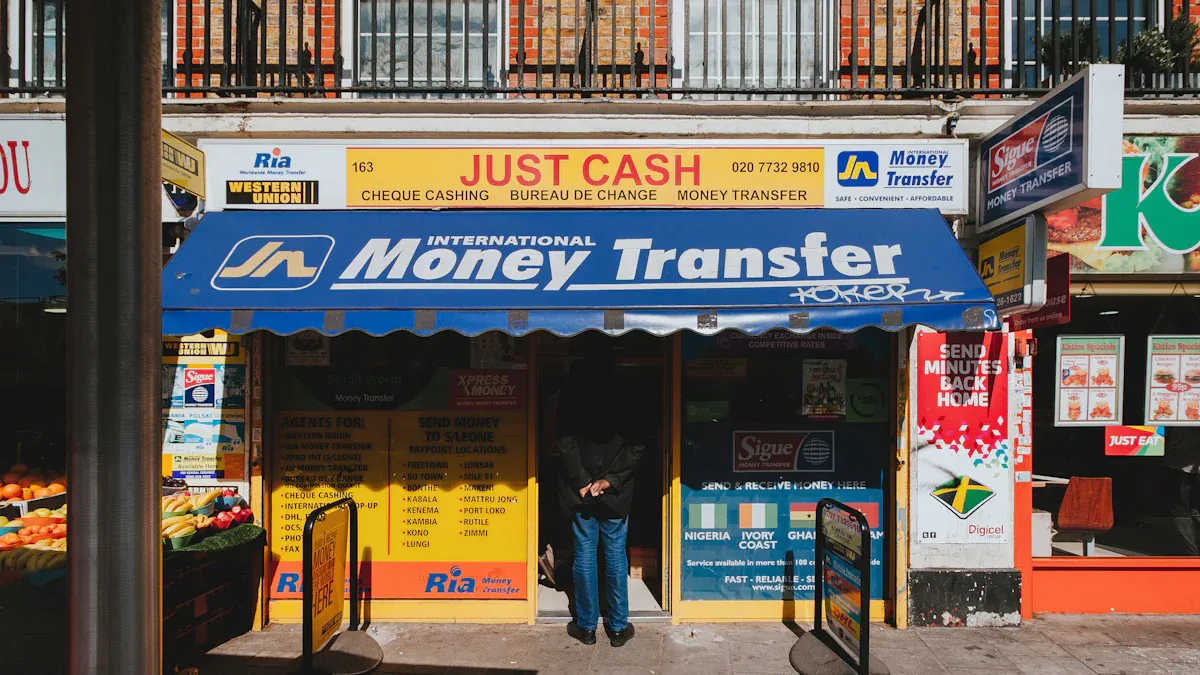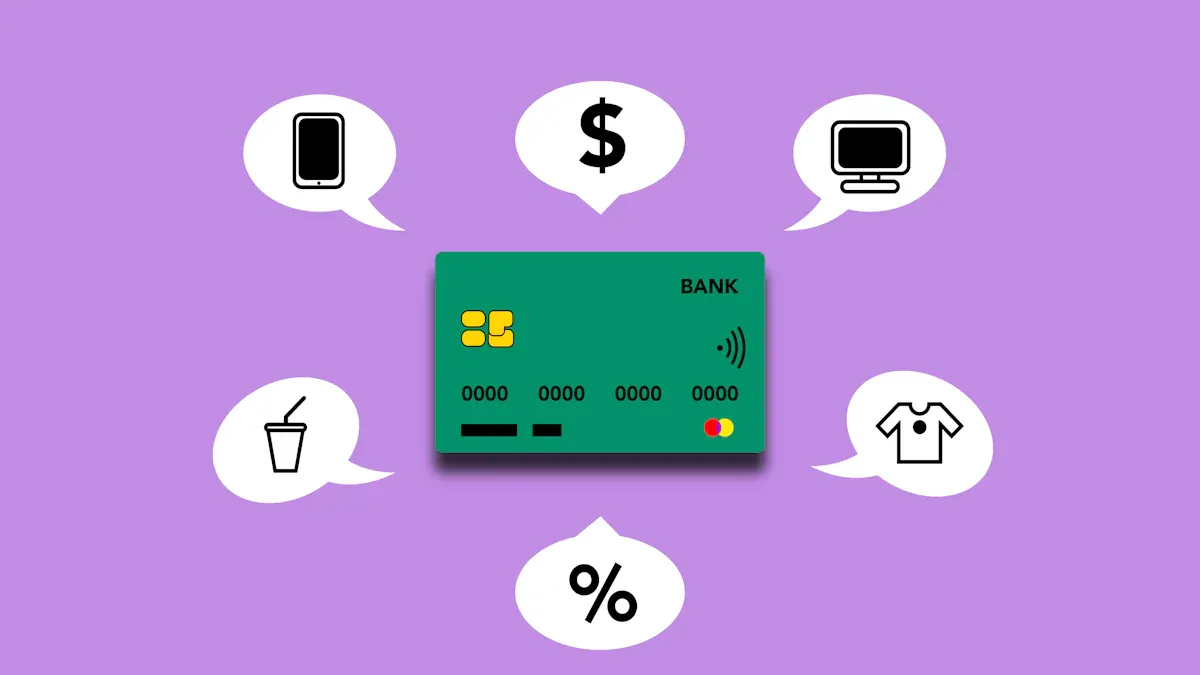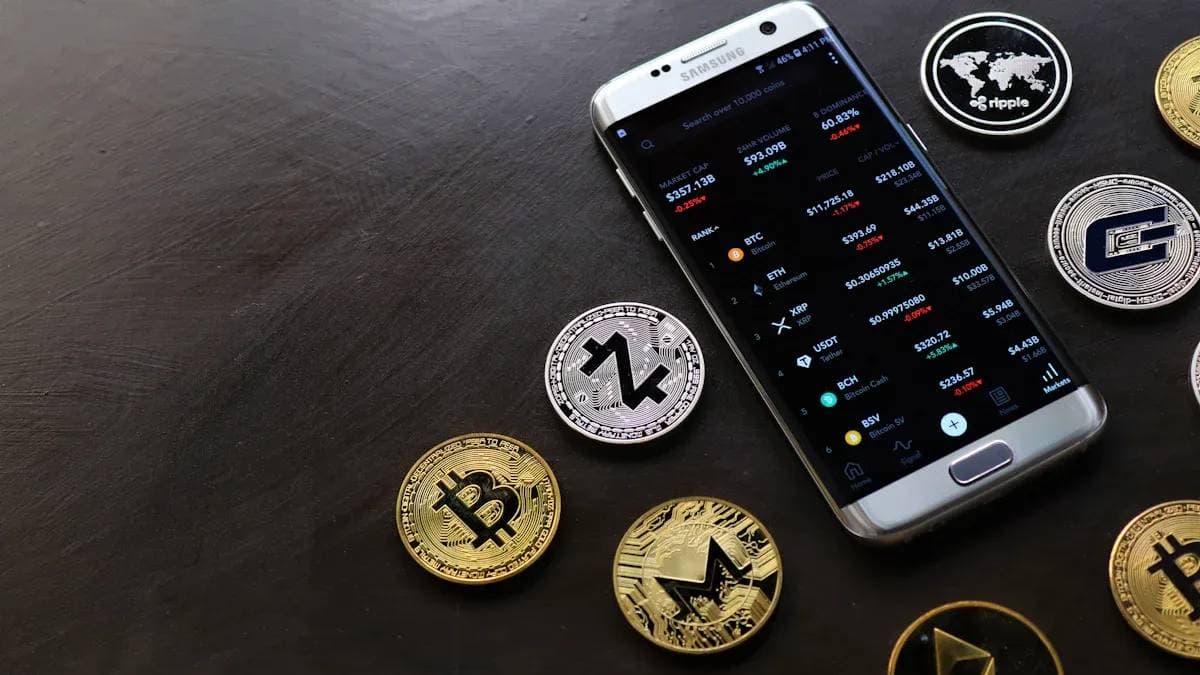- EasyCard
- Trade
- Help
- Announcement
- Academy
- SWIFT Code
- Iban Number
- Referral
- Customer Service
- Blog
- Creator
Choosing a Remittance Platform: Never Ignore These 3 Key Points

Image Source: unsplash
Many people, when choosing a remittance platform, often only compare handling fees and speed, yet may fall into the traps of “high exchange rate margins” and “fund security.” A wise decision requires you to review the platform like an expert. Reviewing compliance qualifications, assessing true costs, and verifying security measures are the cornerstones of ensuring fund security and avoiding losses.
Core Points
- When choosing a remittance platform, first check whether it has a financial license issued by the government to ensure fund security.
- Don’t just look at handling fees; also calculate the exchange rate difference to understand the true total cost of remittance.
- Confirm that the platform has security technologies such as data encryption and two-factor authentication, and test whether customer service can provide timely assistance.
Reviewing the Compliance and Regulation of Remittance Platforms

Image Source: pexels
The first line of defense for your fund security is the platform’s compliance. A platform holding a legitimate financial license means it is supervised and constrained by government agencies and must comply with strict fund security and anti-money laundering regulations. This is like choosing a restaurant with a business license, which is the basic guarantee of food safety.
Querying Financial Regulatory Licenses
Each country or region has dedicated financial regulatory authorities. These authorities are responsible for authorizing and supervising companies that provide financial services, including cross-border remittances.
Tip: Regulatory Requirements in Different Regions Taking Singapore as an example, companies providing remittance services need to hold corresponding licenses under the Payment Services Act, such as:
- Currency exchange license
- Standard payment institution or major payment institution license
So, how should you query it? It’s actually very simple and can be completed in just a few steps. Taking the UK Financial Conduct Authority (FCA) as an example, you can follow these steps:
- Visit the FCA’s official registration website (
register.fca.org.uk). - Enter the platform name in the search box, such as Wise or Biyapay.
- View the company status in the search results to confirm whether it is authorized by the FCA.
- Check the “Permissions” module to understand which types of customers the platform can serve.
Through this simple verification, you can clearly understand whether a remittance platform is operating legally.
Identifying Risks of Unlicensed Operations
Unlicensed platforms are huge black holes for fund security. They are not subject to any regulation, and once your money enters, it may face the risk of being unrecoverable. You need to be wary of platforms with the following characteristics:
- Promise “super favorable exchange rates” far above the market average.
- Company information is opaque, with no registered address or contact information found on the website.
- Only provide personal social accounts (such as WeChat, WhatsApp) as customer service channels.
- Require you to transfer funds to personal bank accounts rather than company accounts.
Choosing a compliant remittance platform is the most critical first step in safeguarding your fund security.
Assessing Fees, Exchange Rates, and Convenience

Image Source: pexels
After passing the compliance review, the next step is to assess the platform’s “cost-effectiveness.” Smart remitters never just look at surface handling fees but comprehensively consider total costs and user experience.
Calculating True Remittance Costs
Your true remittance cost consists of two parts: visible “handling fees” and hidden “exchange rate margins”. Many platforms attract you with “zero handling fees” but quietly mark up the exchange rate.
What is the “mid-market exchange rate”? The exchange rate you can find on Google is the mid-market exchange rate. It represents the fairest real-time value of currencies and is the benchmark used in transactions between financial institutions. An excellent remittance platform, such as Wise, transparently uses this rate and only charges a clear service fee.
In contrast, traditional banks’ exchange rates usually include a 3-5% hidden markup. This means that even if the handling fee is low, for every $1,000 you remit, you may unknowingly lose $30-$50 on the exchange rate.
Spotting Hidden Fees
“First transfer free” or “excellent exchange rate” promotions are very tempting, but you need to stay vigilant. Some platforms may offer one free transfer, possibly charging $5-$15 for subsequent transactions. A more common tactic is to manipulate the exchange rate; for example, a $1,000 transfer with a seemingly favorable rate may cause you to lose more than $20.
Additionally, you should also watch out for other hidden fees:
- Payment method fees: Using a credit card may be treated by your issuing bank (such as a licensed bank in Hong Kong) as a “cash advance,” incurring additional fees.
- Recipient method fees: Choosing cash pickup may be more expensive than direct bank deposit.
Considering Payment and Arrival Convenience
Beyond costs, convenience directly affects your remittance experience. A good platform should offer various payment options, such as credit cards, debit cards, or bank transfers.
The recipient method is equally important. If remitting to mainland China, platforms that support direct transfers to Alipay or WeChat (such as Remitly) will greatly convenience the recipient. Finally, don’t forget arrival speed. Platforms like Panda Remit and Remitly advertise “arrival in minutes,” which is crucial for urgent fund needs.
Verifying Security Technologies and Customer Support
If compliance licenses are the platform’s “birth certificate” and fees/exchange rates are its “cost-effectiveness,” then security technologies and customer support are its “airbags” and “emergency call center.” During the remittance process, they are the last and most important line of defense to protect your funds and resolve unexpected issues.
Checking Core Security Measures
A professional remittance platform protects your data and funds like a bank vault. You need to check whether it has the following core security technologies:
- SSL data encryption: SSL encryption technology is like a secure digital tunnel. It uses high-strength algorithms such as AES-256 recognized by banks and government agencies to protect all data between your browser and the website. This means your bank account, password, and transaction information are encrypted during transmission, making it difficult for hackers to steal.
- Two-factor authentication (2FA): In addition to passwords, 2FA requires you to verify your identity through a second method, such as entering a one-time verification code sent to your phone. This adds a critical layer of protection to your account. Even if someone steals your password, they cannot log in or complete transactions without your phone.
- Intelligent risk control system: Advanced platforms use artificial intelligence (AI) and machine learning technologies to analyze transaction behavior 7x24 hours uninterrupted. Once suspicious activity is detected, the system immediately alerts or blocks, proactively preventing fraud risks.
Tip: How to Quickly Identify a Secure Website? Check the browser address bar. If the URL starts with
https://and has a small lock icon next to it, it means the website uses SSL encryption. Platforms like Biyapay not only have all the above security measures but also comply with industry data security standards such as PCI DSS, providing users with comprehensive security assurance.
Testing Customer Service Effectiveness
When your remittance encounters delays, information entry errors, or any unexpected issues, a responsive and smooth-communicating customer service team is crucial. The anxiety of waiting for funds to arrive can be infinitely amplified by a poor customer service experience.
An excellent customer service team should have the following characteristics:
- Multiple contact methods: Provide online chat, email, and customer service phone channels.
- Support Chinese service: For Chinese users, barrier-free communication can greatly improve problem-solving efficiency.
- Timely and professional response: Able to give you clear and effective replies in a short time.
Before remitting, consider proactively contacting customer service once. You can ask a question about handling fees or arrival time to test their response speed and service attitude. For example, Sendwave provides 24/7 online customer service, and Biyapay also offers multiple contact methods to ensure you can get help anytime when needed. This simple test can help you judge whether the platform is reliable when you really encounter problems.
Choosing a reliable remittance platform is essentially taking responsibility for your funds. Please remember these three golden rules:
- Review compliance licenses: Ensure the platform operates legally.
- Calculate true costs: Comprehensively consider handling fees and exchange rate differences.
- Verify security and customer service: Confirm technical safeguards and support effectiveness.
Your choice is crucial. Studies show that if global remittance costs are reduced, recipients in developing countries could receive more than 16 billion USD annually. Before your next remittance, spend a few minutes doing a “security check” on your platform to make the wisest financial decision.
FAQ
Are “first transfer free” remittance platforms really cost-effective?
A first free transfer may save you a fee. But you still need to be wary of the true costs of subsequent transactions. Some platforms may charge higher handling fees in later transactions or hide markups in the exchange rate. Calculating the total cost is always key.
What should I do if I’ve already used an unsatisfactory platform?
You should immediately stop using the platform and follow these steps:
- Check your bank account to confirm fund security.
- If there is an issue with the remittance, contact platform customer service immediately.
- Keep all transaction records and communication evidence for future needs.
Why do platforms advertising “minute-level arrival” sometimes delay?
Arrival speed is affected by multiple factors. Your chosen payment method (bank cards are usually faster than bank transfers), the banking efficiency in the recipient country/region, and weekends or holidays can all cause delays. The platform’s compliance security checks can sometimes affect speed.
Do remittance platforms have limits on remittance amounts?
Yes, all compliant platforms have amount limits. Limits usually depend on your account verification level, the payment method you choose, and the financial regulations of the sending and receiving locations. Completing higher-level identity verification can usually increase your single or daily remittance limit.
*This article is provided for general information purposes and does not constitute legal, tax or other professional advice from BiyaPay or its subsidiaries and its affiliates, and it is not intended as a substitute for obtaining advice from a financial advisor or any other professional.
We make no representations, warranties or warranties, express or implied, as to the accuracy, completeness or timeliness of the contents of this publication.




Contact Us
Company and Team
BiyaPay Products
Customer Services
BIYA GLOBAL LLC is a licensed entity registered with the U.S. Securities and Exchange Commission (SEC No.: 802-127417); a certified member of the Financial Industry Regulatory Authority (FINRA) (Central Registration Depository CRD No.: 325027); regulated by the Financial Industry Regulatory Authority (FINRA) and the U.S. Securities and Exchange Commission (SEC).
BIYA GLOBAL LLC is registered with the Financial Crimes Enforcement Network (FinCEN), an agency under the U.S. Department of the Treasury, as a Money Services Business (MSB), with registration number 31000218637349, and regulated by the Financial Crimes Enforcement Network (FinCEN).
BIYA GLOBAL LIMITED is a registered Financial Service Provider (FSP) in New Zealand, with registration number FSP1007221, and is also a registered member of the Financial Services Complaints Limited (FSCL), an independent dispute resolution scheme in New Zealand.



















